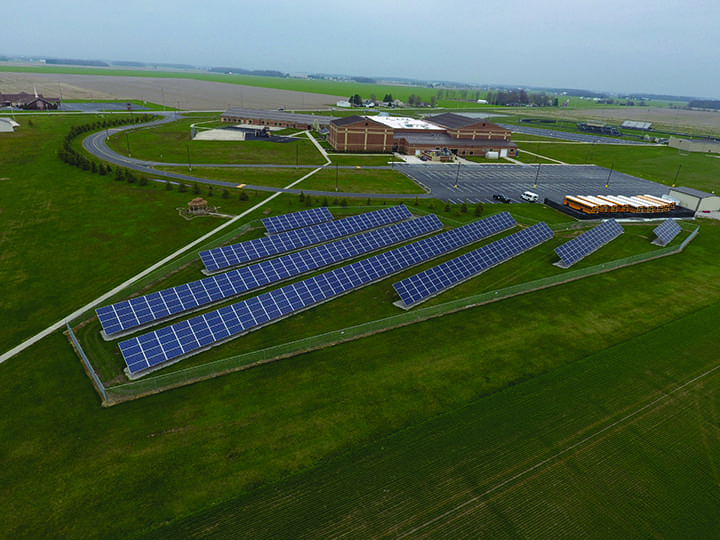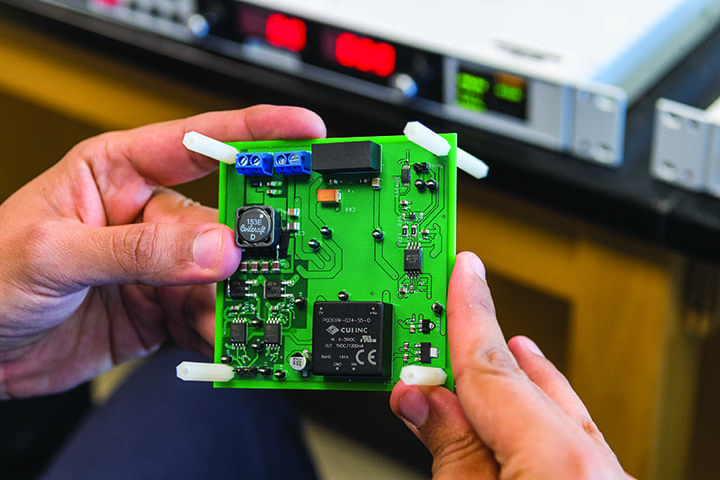Pandemic Brings Pause, but Future Looks Bright
The post Pandemic Brings Pause, but Future Looks Bright appeared first on POWER Magazine.

The solar power industry has been hammered by the global lockdowns due to the coronavirus, but technology advancements that continue to lower costs point to a rapid recovery.
The COVID-19 pandemic has not been kind to many industries. Growth in renewable energy, which was surging worldwide into the early part of 2020, has been slowed. A mid-June report, based on an analysis of U.S. unemployment data conducted by BW Research Partnership, showed the U.S. clean energy sector lost more than 620,000 jobs-almost one-fifth of its workforce-since lockdown measures began in the first quarter of this year. Many of those jobs were specific to solar power.
But the industry, while slowed by the coronavirus, has not been stopped. Analysts say technology advancements from solar equipment manufacturers and service providers will power growth. They say the sector could be quick to rebound, as prices for solar continue to drop, and generation becomes more efficient.
We were very worried about the impacts of COVID-19, as I am sure many small businesses were, particularly in that solar panels are still a discretionary spend," said Jared McKenzie, CEO at Schaumburg, Illinois-based Headline Solar. However, we've had a surge in sales and inquiries, both of which are up nearly 30%. Our warehouses were well-stocked in advance and so we did not suffer from any supply chain disruption. We've been investing in growth, particularly in hiring, and we remain very excited about the continued expansion of our industry in a post-COVID' world."
McKenzie told POWER that Right now the two biggest factors are certainty' and responsibility,' " and he said customers recognize that the coronavirus is a global issue. The same is true of climate change: individual actions like installing solar on your home can make a difference for everyone. Our new customers are telling us that this is important. And practically speaking, everyone is spending more time at home so electric bills are going up... solar panels essentially replace a highly variable electric rate from local providers with a fixed payment cost that is almost always lower than your average monthly utility bill. This is the certainty and control that people want now more than ever."
Falling CostsResearch firm Wood Mackenzie recently reported that the costs of solar systems are falling across the U.S., mirroring a global trend. Wood Mackenzie said the price of residential solar systems incorporating silicon crystal panels is expected to drop 17% over the next five years, with utility-scale systems seeing a 20% price drop for the same period.
The cost of solar technology has come down so much," said John Lichtenberger, senior vice president of Core Solar, in an interview with POWER. Lichtenberger's Texas-based company finances, develops, builds, and operates power generation projects, and his experience includes stints working with both thermal and renewable energy.
Lichtenberger said renewable resources, including solar, will lead the economic recovery. We've got a generation of [thermal] power plants that has hit the end of their useful lives," he said. It will take several solar plants to replace that [generation]." He said the solar industry today emulates high-tech, where costs for things like televisions and other high-tech gadgets comes down as the technology advances. We're seeing the same thing in solar," he said. The technology has become a commodity, and we're seeing production across the globe."
New CollaborationsThe cost savings, and the ability to control energy costs, have driven solar power adoption in both the residential, and commercial and industrial sectors, leading to collaboration on projects from solar developers and finance companies. Inovateus Solar, an Indiana-based solar developer, and En-Trust, a Midwest energy service and finance company for K-12 education, are working on a portfolio of solar and energy efficiency projects for six Ohio school districts. Inovateus said the projects will provide an average of 25% in annual utility bill savings for each school, with those savings expected to grow over 30 years.
 |
1. This 235.9-kW solar power system was developed by Inovateus Solar for the Holgate School Corp. in Ohio. Courtesy: Inovateus Solar |
Inovateus said each school district's energy usage varies, so the systems have been designed to match the energy needs of each school. The projects range from a 235.9-kW system installed for the Holgate School Corp. (Figure 1), to a 1.47-MW ground-mounted solar array that was recently completed at Elida High School.
En-Trust will finance the solar and energy improvements with a 25-year power purchase agreement (PPA). The school districts have no upfront capital costs with this financing, and only pay En-Trust for the generated solar power at a kilowatt-hour rate significantly lower than the utility's rate. En-Trust also operates and maintains the projects for the entire 25-year PPA term.
We're excited to be collaborating with En-Trust on these Ohio solar school projects," said Nathan Vogel, vice president of business development at Inovateus. It's typically difficult to finance school projects, but En-Trust has created a financing solution that truly makes it easy for schools to be more sustainable and to reduce their energy costs."
Solar contractor Planet Solar Inc. recently chose LG Electronics as the exclusive solar panel provider for the Huntley Indian Wells community, a new residential project in Indian Wells, California. Planet Solar wanted panels with an all-black, sleek appearance, along with high efficiency, and each new home will be outfitted with LG NeON 2 Black 335-350W solar panels along with an inverter.
LG's solar panels offer the company's Cello Technology, which uses 12 thin, circular wires in each cell to create more pathways for electrons and scatter light more effectively within the cells. LG's NeON 2 Black solar panels also have a low degradation rate, guaranteeing 90.08% of labeled power output even in year 25.
Managing Solar + StorageAutoGrid, which provides flexibility management software for the energy industry, in late June announced a partnership with Sunrun to provide AutoGrid Flex Virtual Power Plant (VPP) software to help manage Sunrun's fleet of U.S. residential batteries. Sunrun will use features of the AutoGrid Flex platform to help manage its Brightbox rechargeable solar batteries, and offer grid services and energy management solutions. The cloud-based platform enhances Sunrun's ability to work with utilities and other electricity providers to optimize and dispatch its storage fleet for the maximum economic benefit of both customers and the grid," Sunrun said in an email to POWER.
AutoGrid has more than 5 GW of generation assets under contract, and manages distributed energy resources in 12 countries. Guidehouse, the research and analysis firm (formerly Navigant Research), recently ranked AutoGrid Flex as the world's top VPP platform.
As economies are coming back from lockdowns imposed by COVID-19, we are seeing increased societal demand for sustainable energy along with significant demand for cloud-based digital solutions that improve efficiency of operations and competitiveness for energy companies addressing this demand," said Amit Narayan, AutoGrid's founder and CEO, in an email to POWER.
Eric Hill, energy storage and systems manager for Alpha Technologies Services, an EnerSys company, told POWER that Adding batteries to a grid-tied solar power system allows the customer to use their solar power system in the event of a grid outage as well as store the energy and use it as needed for the intended application." Hill said, With anything regarding technology, customers are always looking for the next best thing. There have been many advances in the world of energy storage into renewable applications for both existing chemistries [lead-acid] and next-gen chemistries [lithium-ion]. Regarding lead-acid and contrary to popular belief, this chemistry, while established and quite aged, has not seen its last day. Lead-acid continues to provide the best economical and practical solution for some renewable applications such as emergency backup and off-grid applications. Lead-acid also has a well-established end-of-life recycling procedure, making it the most highly recyclable product on the planet today."
More Energy from Each PanelDelta Electronics (Americas) collaborated with San Jose State University (SJSU) on a project to develop a prototype power converter for photovoltaic (PV) panels, enabling the capture of more than 30% more energy than conventional technologies.
Collaborating with renowned research institutions like San Jose State is critical for our industry to unlock further synergies in advancing energy-efficient technologies for a more sustainable future," said Kelvin Huang, president of Delta Electronics (Americas), in comments shared with POWER. Delta's expertise in developing solar PV inverters with efficiencies as high as 99.2%, and in integrating smart green solutions has been instrumental in furthering the project. This initiative also reflects Delta's focus on [corporate social responsibility], which entails cultivating long-lasting partnerships with key stakeholders for further sustainable development."
 |
2. A collaboration between San Jose State University and Delta Electronics (Americas) included production of a micro, integrated converter, which is paired with an individual solar panel to improve performance. Courtesy: Delta Electronics (Americas) |
The project included production of a demonstration-scale micro, integrated converter (Figure 2) that utilizes a magnetically coupled architecture to reduce the size, weight, and cost of each converter. In the prototype, each micro integrated converter was paired with an individual PV panel that was part of a larger string. In this construction, each converter is able to maximize the energy output of its panel by processing a fraction of its generated power. This increased system efficiency; results showed that captured energy rose by more than 30% in shaded environments.
A group of scientists from the Solar Energy Research Institute of Singapore in June released a report that said combining bifacial panels and single-axis trackers is the best way to achieve the lowest levelized cost of energy in solar power projects based on crystalline silicon technology. In the study, published in the Joule science journal, the scientists said their tests show that combination can ensure a yield that is up to 35% higher than conventional systems.
The technical advancements in solar systems are really tremendous," said Headline Solar's McKenzie. Overall the systems cost less, produce more power, and last longer. A typical panel now has twice as many solar cells (120 compared to 60) because the framing between the cells is thinner. This means that the system will last longer too because the power load is spread out across more cells. Plus, there's about 10% more power coming out of the system as a whole because each cell is more efficient than it was 10 or even two years ago."
-Darrell Proctor is associate editor for POWER (@DarrellProctor1, @POWERmagazine).
The post Pandemic Brings Pause, but Future Looks Bright appeared first on POWER Magazine.